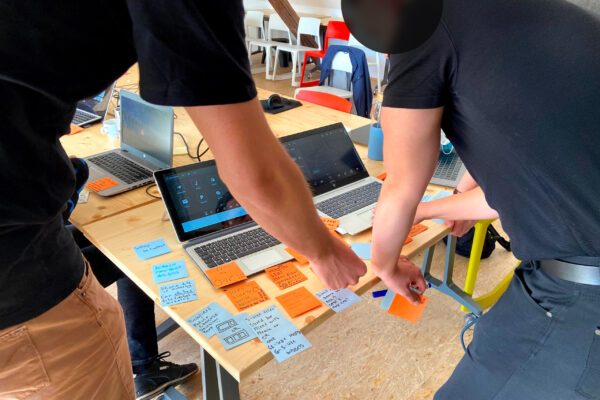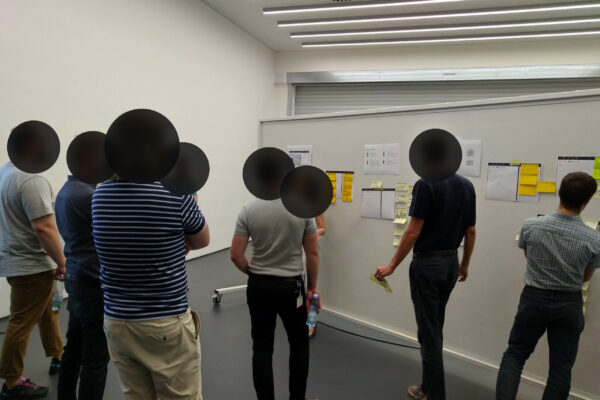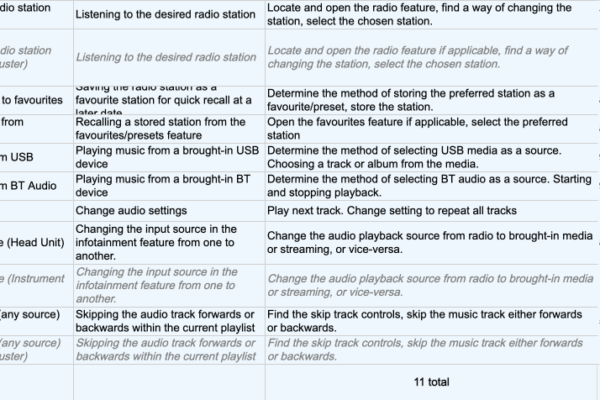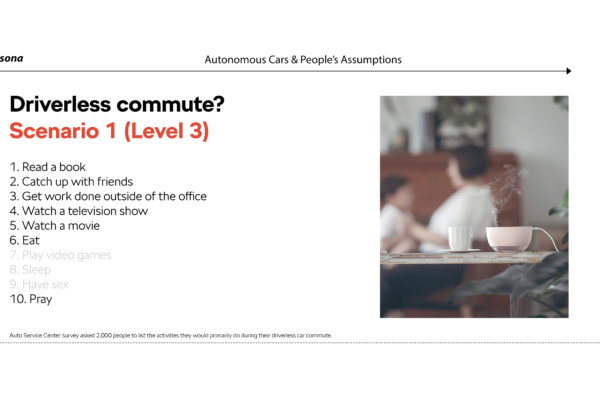ŠKODA Cockpit Experience
Join me on a journey through design innovation, where ŠKODA's cockpit transitions from fragmented and dated to unified and benchmark-setting experience.
Period
2018-2021
Industry
Automotive
Platforms
- In-car HMI
- Mobile
- Web
My role
- Lead HMI UX Designer
- Head of UX/UI
This case study unfolds my journey at ŠKODA AUTO, where I transitioned from HMI UX Lead to Head of UX & Digital Design in a span of three years.
It encapsulates the challenges, strategies, and achievements in establishing a user-centric design mindset and practices, elevating UX/UI maturity from Limited (Level 1) to Structured (Level 4) at one of the world’s oldest automotive manufacturers, leading to a release of benchamark-setting suite of products.
Background
ŠKODA AUTO, part of the Volkswagen Group, has a storied history of over 125 years.
Renowned for its robust hardware design, manufacturing prowess, and operational excellence, ŠKODA has consistently delivered impressive sales returns and expanded its market footprint, notably in Europe and Asia.
However, as the automotive landscape evolves towards more integrated software solutions and customer-focused services, ŠKODA faced a crucial challenge in aligning with modern expectations, thereby necessitating a transformative approach in its design and user experience strategy.

Challenge
Engineering-driven interactions and outdated visuals
The design was heavily influenced by engineering needs rather than user experience, leading to interfaces that were functional but not user-friendly. Coupled with visuals that no longer met modern standards, this approach was at odds with the expectations of today’s tech-savvy consumers, highlighting the need for a design paradigm shift.
My role
Starting as the sole Lead HMI UX Designer, I spearheaded the UX/UI transformation, eventually becoming the Head of UX & Digital Design.
My responsibilities spanned from hands-on design and research to strategic leadership, fostering a culture of innovation and design thinking across the organisation.
Goal
To transform the ŠKODA cockpit experience into a best-in-class, coherent, and efficiently manageable UX that not only differentiates ŠKODA in the market but also drives higher revenue through enhanced customer satisfaction.
Target audience
Our primary focus was on both existing and prospective ŠKODA drivers.
Through qualitative research, four behavioural archetypes were identified and framed as personas to facilitate easier internal collaboration—from traditional experience seekers to the modern, always-connected family.
Strategy for transformation
Recognising the multifaceted nature of these challenges, we hypothesised that elevating organisational UX/UI maturity would catalyse the development of superior products, subsequently enhancing ŠKODA’s brand image and revenue.
My strategy was grounded in a comprehensive overhaul across three areas: People, Process and Culture, and Product.
People: From fragmentation to unity
2018: My journey began as ŠKODA’s inaugural Lead UX Designer, amidst a fragmented team of 3 UI designers, 1 UX researcher, and uncoordinated contractors and agencies. This period was marked by disjointed efforts across in-car, mobile, and web UX/UI.
2021: Ascending to Head of UX/UI Design in 2020, I accelerated the centralisation and creation of a cohesive UX/UI team that integrated in-car, mobile, and web platforms. This expanded, systematically managed team comprised over 40 professionals organised in new dedicated functions of UX/UI design, Research, and DesignOps. Our budget witnessed a sixfold increase, reflecting the organisation’s renewed commitment to design excellence.
01
Process and culture: Fostering agility and collaboration
A cultural shift towards agility and user-centricity was paramount. I championed this through extensive evangelisation efforts, involving workshops and training across all organisational levels, and initiating pilot projects that emphasised agile methodologies and user engagement. Central to this transformation was the establishment of a multi-platform Design System, serving as the nexus for UX/UI design efforts and fostering unprecedented collaboration across disciplines.
02
Product: Redefining the ŠKODA Experience
Our holistic strategy facilitated a paradigm shift in product development. By embracing customer-centric and agile practices, we redefined the ŠKODA cockpit experience, culminating in the launch of innovative features like the voice assistant “Laura” and a comprehensive Design System that ensured consistency and brand alignment across all touchpoints.
03
Zooming in on the HMI design process
Of all the initiatives I led during my time with ŠKODA, I was most hands-on in designing the new in-car experience.
The development of the new cockpit concept spanned several years—from early explorations in 2018 to the car’s reveal at the end of 2023. I left the company at the end of 2021 when the main concept was finished.
The process we underwent was not linear; it involved a lot of back and forth, tinkering, negotiating, convincing, and experimenting. However, reflecting on it, it could be simplified into the following steps:
Deep dive into the problem space
I was the lead designer conducting analyses, initiating and facilitating collaborative workshops, and running or co-leading user research sessions.
Activities and methods:
- As-Is assessment of the current cockpit generation
- Heuristic analysis
- Top task analysis
- Usability testing
- Competitor research
- Academic research
- Automotive regulations review
- Critical review of VW base system
- VW Group and ŠKODA strategy and goals review
Frame the opportunity and constraints
I was the lead designer analysing system limitations, identifying opportunities, synthesising insights from the Discovery phase, and together with the lead researcher specifying user needs.
Activities and methods:
1. Problem framing
2. Audiences definition
3. System requirements, limitations and opportunities
Internal showcar – virtual HMI
I was the lead designer being responsible for creating an exploratory vision of the new interface.
Activities and methods:
- Design sprint
- Experience vision (HTML prototype, video)
- Design principles
Solving information architecture
I was the lead designer delving deep into information architecture requirements and opportunities.
Activities and methods:
- Open and closed card sorting
- Tree testing
Deep dive into the solution space
I was the lead designer of the main control concept (low and mid fidelity). Later, when specific HMI apps were designed in detail, I handed over the lead responsibility as I took over as the Head of UX/UI. From the point I was still overseeing all the work, giving feedback and direction and was accountable for the result.
Activities and methods:
1. Low-fidelity
2. Mid-fidelity
3. High-fidelity
Detailed designs and specifications
At this stage, as the Head of UX/UI, I was overseeing all the work, giving feedback and direction and was accountable for the result. In the new role, I made sure through focusing on ŠKODA’s design system, that high visual and interaction standard is delivered. The ŠKODA Flow design system won the Red Dot Award in 2021.
Activities and methods:
- Base system change request formulation
- Design system design and implementation
Outcomes
The culmination of all of the above described efforts was manifest in the transformative impact on ŠKODA’s product lineup. The new generation experience is fully integrated in the 2024 ŠKODA Kodiaq, which received widespread acclaim for its intuitive user interface and modern design aesthetics.
Other models which have also received updated digital experience:
- ŠKODA Superb 2024 (new gen.)
- ŠKODA Octavia 2024 (facelift)
- ŠKODA Enyaq 2023 (facelift)
This project not only repositioned ŠKODA as a strong competitor in the in-car experience but also significantly contributed to enhancing the brand’s market competitiveness and customer appeal.
”The smart dials are not only very cool but also functional. […] A real step up from the previous Kodiaq.
AutoTrader [1.13M YT subscribers]
All of the pictures above are from the ŠKODA Storyboard press website.
Under my leadership, UX/UI maturity was elevated, leading to the systematisation and professionalisation of the design discipline and process. A whole suite of key ŠKODA products were redesigned, winning not only design awards but, more importantly, our customers’ hearts and minds 💚

















































